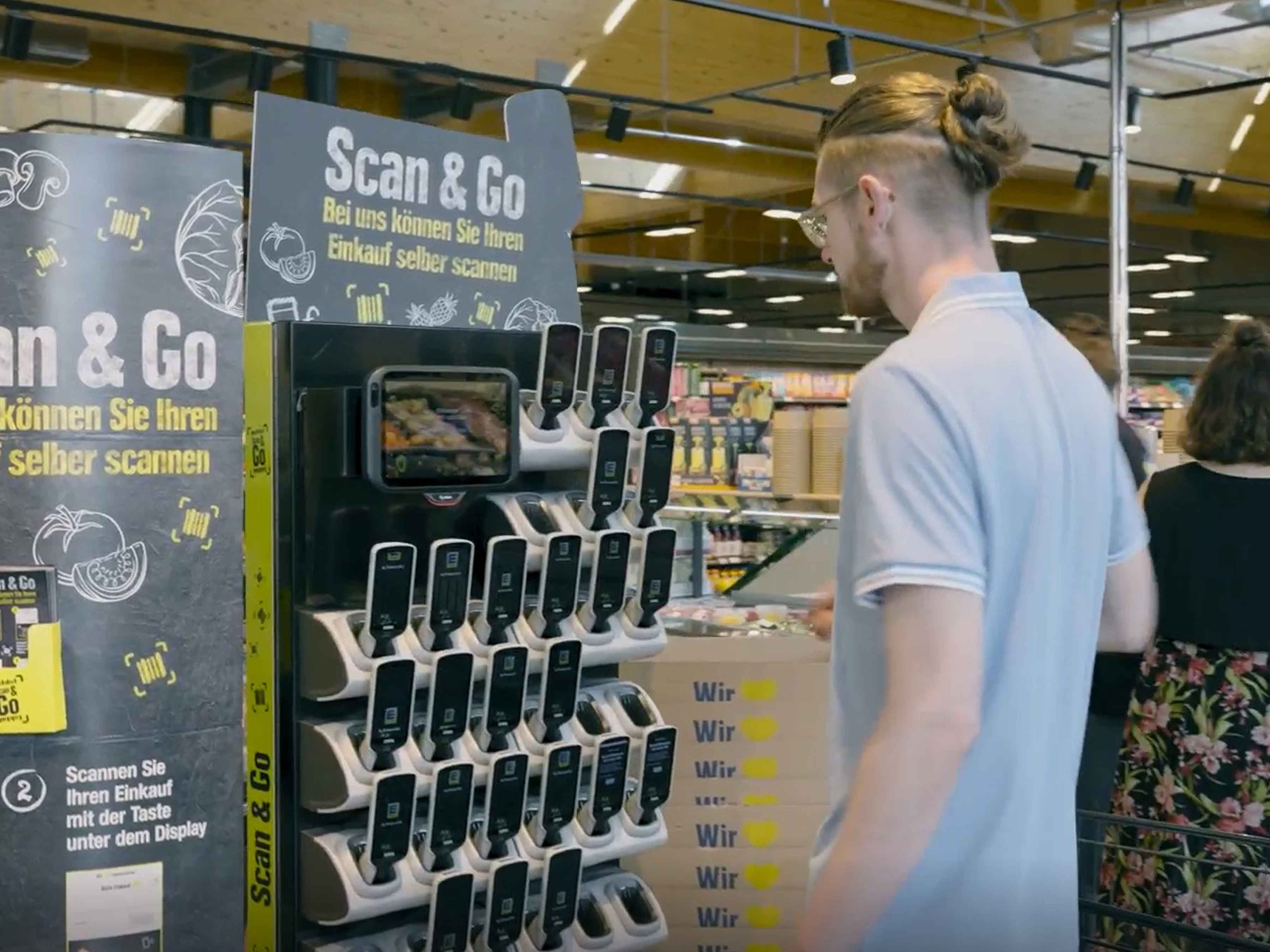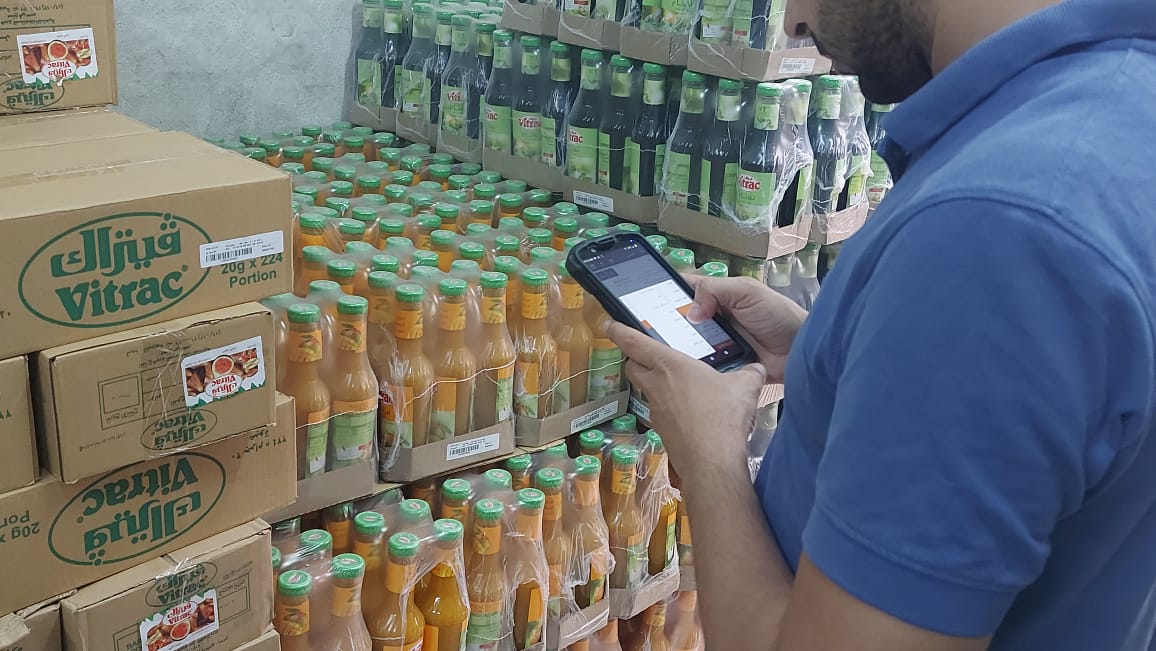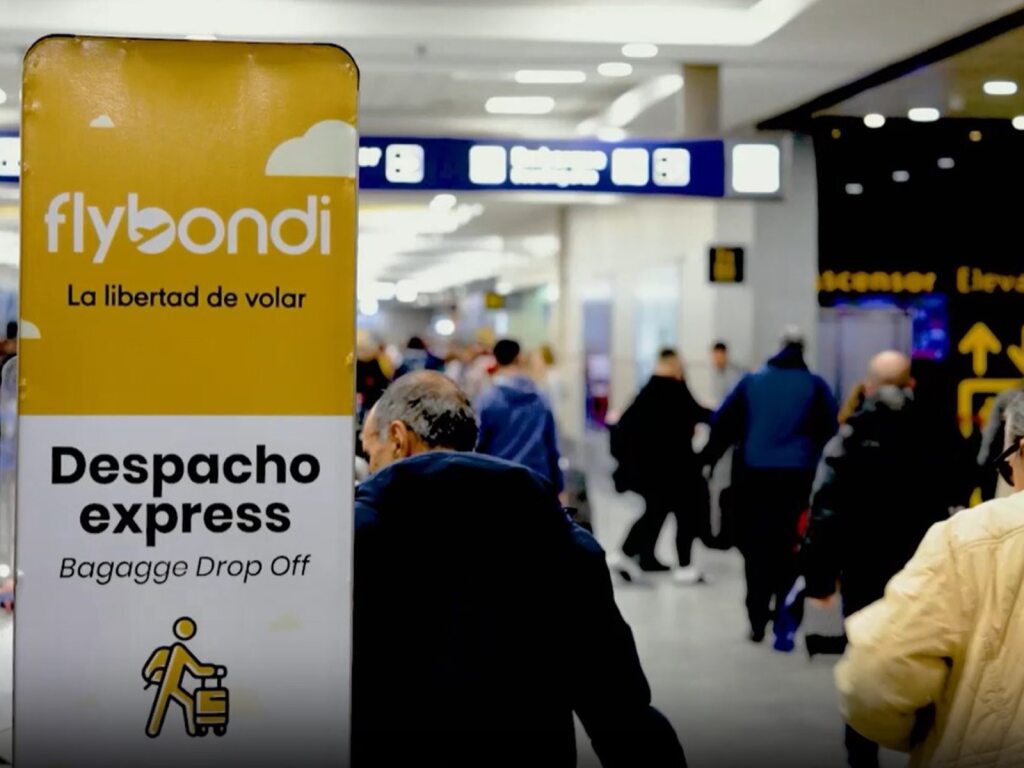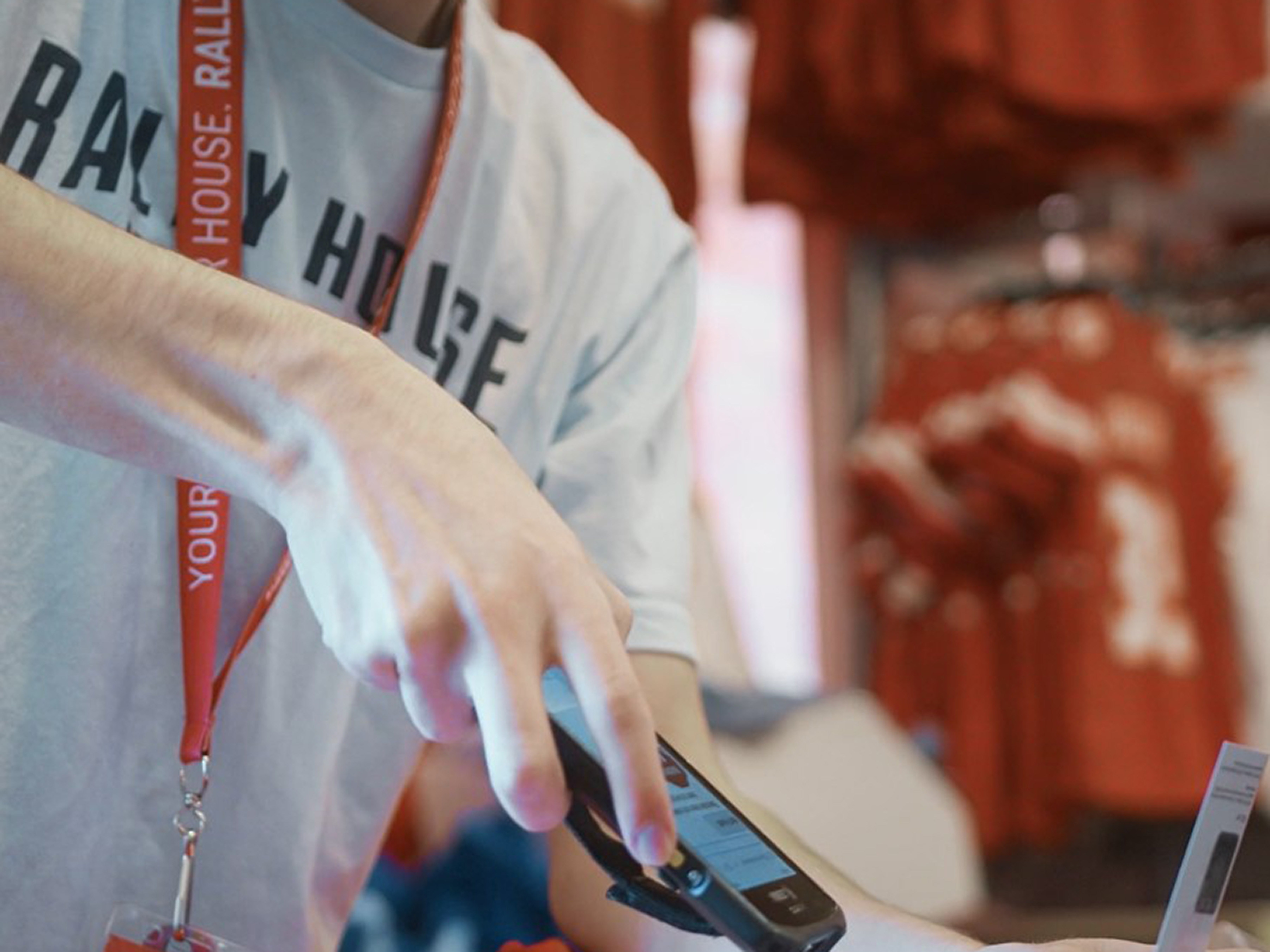Transform retail operations with Zebra’s retail technology solutions, featuring hardware and software for improving inventory management and empowering teams.
Streamline operations with Zebra’s healthcare technology solutions, featuring hardware and software to improve staff collaboration and optimise workflows.
Enhance processes with Zebra’s manufacturing technology solutions, featuring hardware and software for automation, data analysis, and factory connectivity.
Zebra’s transportation and logistics technology solutions feature hardware and software for enhancing route planning, visibility, and automating processes.
Zebra's hospitality technology solutions equip your hotel and restaurant staff to deliver superior customer and guest service through inventory tracking and more.
Zebra's market-leading solutions and products improve customer satisfaction with a lower cost per interaction by keeping service representatives connected with colleagues, customers, management and the tools they use to satisfy customers across the supply chain.
Empower your field workers with purpose-driven mobile technology solutions to help them capture and share critical data in any environment.
Zebra's range of mobile computers equip your workforce with the devices they need from handhelds and tablets to wearables and vehicle-mounted computers.
Zebra's desktop, mobile, industrial, and portable printers for barcode labels, receipts, RFID tags and cards give you smarter ways to track and manage assets.
Zebra's 1D and 2D corded and cordless barcode scanners anticipate any scanning challenge in a variety of environments, whether retail, healthcare, T&L or manufacturing.
Zebra's extensive range of RAIN RFID readers, antennas, and printers give you consistent and accurate tracking.
Choose Zebra's reliable barcode, RFID and card supplies carefully selected to ensure high performance, print quality, durability and readability.
Zebra's rugged tablets and 2-in-1 laptops are thin and lightweight, yet rugged to work wherever you do on familiar and easy-to-use Windows or Android OS.
With Zebra's family of fixed industrial scanners and machine vision technologies, you can tailor your solutions to your environment and applications.
Zebra’s line of kiosks can meet any self-service or digital signage need, from checking prices and stock on an in-aisle store kiosk to fully-featured kiosks that can be deployed on the wall, counter, desktop or floor in a retail store, hotel, airport check-in gate, physician’s office, local government office and more.
Discover Zebra’s range of accessories from chargers, communication cables to cases to help you customise your mobile device for optimal efficiency.
Zebra's environmental sensors monitor temperature-sensitive products, offering data insights on environmental conditions across industry applications.
Zebra's location technologies provide real-time tracking for your organisation to better manage and optimise your critical assets and create more efficient workflows.
Enhance frontline operations with Zebra’s AI software solutions, which optimize workflows, streamline processes, and simplify tasks for improved business outcomes.
Empower your frontline with Zebra Companion AI, offering instant, tailored insights and support to streamline operations and enhance productivity.
The everything you need to rapidly and cost effectively develop high-performance AI vision applications on Zebra mobile computers.
Zebra Workcloud, enterprise software solutions boost efficiency, cut costs, improve inventory management, simplify communication and optimize resources.
Keep labour costs low, your talent happy and your organisation compliant. Create an agile operation that can navigate unexpected schedule changes and customer demand to drive sales, satisfy customers and improve your bottom line.
Drive successful enterprise collaboration with prioritized task notifications and improved communication capabilities for easier team collaboration.
Get full visibility of your inventory and automatically pinpoint leaks across all channels.
Reduce uncertainty when you anticipate market volatility. Predict, plan and stay agile to align inventory with shifting demand.
Drive down costs while driving up employee, security, and network performance with software designed to enhance Zebra's wireless infrastructure and mobile solutions.
Explore Zebra’s printer software to integrate, manage and monitor printers easily, maximising IT resources and minimising down time.
Make the most of every stage of your scanning journey from deployment to optimisation. Zebra's barcode scanner software lets you keep devices current and adapt them to your business needs for a stronger ROI across the full lifecycle.
RFID development, demonstration and production software and utilities help you build and manage your RFID deployments more efficiently.
RFID development, demonstration and production software and utilities help you build and manage your RFID deployments more efficiently.
Zebra DNA is the industry’s broadest suite of enterprise software that delivers an ideal experience for all during the entire lifetime of every Zebra device.
Advance your digital transformation and execute your strategic plans with the help of the right location and tracking technology.
The Zebra Aurora suite of machine vision software enables users to solve their track-and-trace, vision inspection and industrial automation needs.
Zebra Aurora Focus brings a new level of simplicity to controlling enterprise-wide manufacturing and logistics automation solutions. With this powerful interface, it’s easy to set up, deploy and run Zebra’s Fixed Industrial Scanners and Machine Vision Smart Cameras, eliminating the need for different tools and reducing training and deployment time.
Aurora Imaging Library™, formerly Matrox Imaging Library, machine-vision software development kit (SDK) has a deep collection of tools for image capture, processing, analysis, annotation, display, and archiving. Code-level customisation starts here.
Aurora Design Assistant™, formerly Matrox Design Assistant, integrated development environment (IDE) is a flowchart-based platform for building machine vision applications, with templates to speed up development and bring solutions online quicker.
Designed for experienced programmers proficient in vision applications, Aurora Vision Library provides the same sophisticated functionality as our Aurora Vision Studio software but presented in programming language.
Aurora Vision Studio, an image processing software for machine & computer vision engineers, allows quick creation, integration & monitoring of powerful OEM vision applications.
Adding innovative tech is critical to your success, but it can be complex and disruptive. Professional Services help you accelerate adoption, and maximise productivity without affecting your workflows, business processes and finances.
Zebra's Managed Service delivers worry-free device management to ensure ultimate uptime for your Zebra Mobile Computers and Printers via dedicated experts.
Find ways you can contact Zebra Technologies’ Support, including Email and Chat, ask a technical question or initiate a Repair Request.
Zebra's Circular Economy Program helps you manage today’s challenges and plan for tomorrow with smart solutions that are good for your budget and the environment.
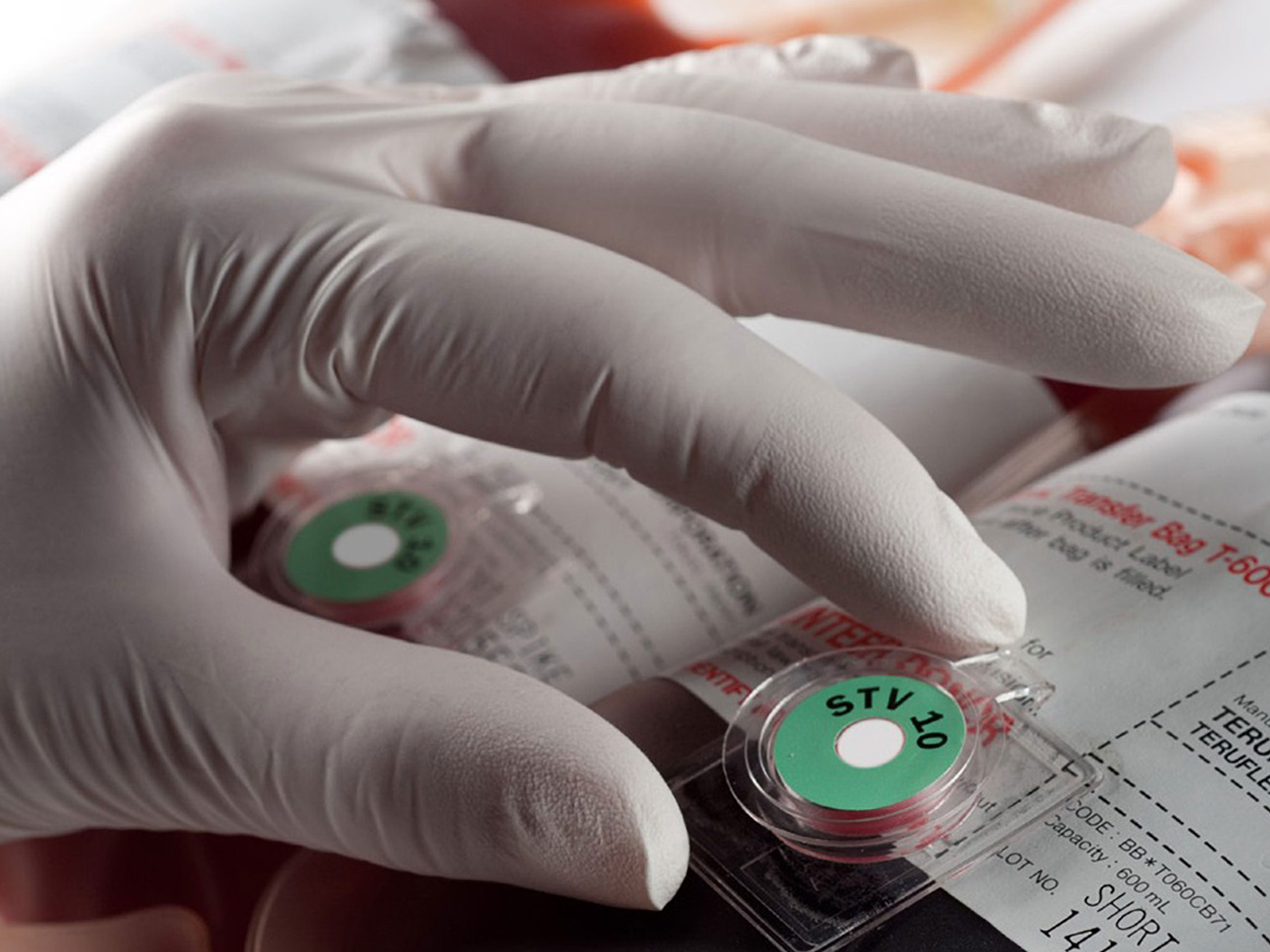
Temperature Indicators Help University Health Kansas City Monitor Blood Bags
University Health has been using Zebra's Safe-T-Vue blood indicators, manufactured by Temptime, since 2015. The temperature-sensitive indicators are applied directly to blood bags. Each bag must stay below the FDA required temperature of 10⁰C.
Zebra Success Story: University Health Kansas City
Overview: Healthcare Challenge
Establish protocols to ensure blood bags stay below the required 10°C.
Benefits / Outcomes
- Ensuring regulatory compliance while delivering quality, patient-first care
Customers
University Health Kansas City
Kansas City, MO/USA
Industry
Healthcare
Solutions
About University Health Kansas City
University Health Kansas City is a mid-sized urban medical centre and teaching hospital with two acute care academic hospital locations and a mission to provide accessible, state-of-the-art quality healthcare to the community regardless of the patients’ ability to pay. As a safety net hospital, the downtown campus is also one of the busiest Level I trauma centres in the city. It provides care to the underserved and often uninsured, patients who sometimes arrive in situations that might be less critical if they had received earlier care.
The Challenge
“While University Health’s transfusion volume may not be considered terribly high—averaging around 3,500 units of red blood cells (RBCs) transfused each year—the majority of its transfusions are related to trauma, which means demand is both critical and unpredictable. Additionally, the medical centre supports surgery, labour and delivery, oncology and a sickle cell clinic.
“On average, University Health needs about 54 units of RBCs per month for massive transfusions. Its team can have six RBCs, six liquid plasmas, and an aphaeresis platelet packed and ready to go in 80 seconds. In addition to the MaxQ MTP Coolers® it uses, the medical centre needs to make sure any RBCs returned to blood bank storage have stayed below the FDA required temperature of 10°C.
The Solution
“The medical centre has been using Zebra’s Safe-T-Vue 10 blood indicators, which are manufactured by Temptime, since 2015. These temperature-sensitive indicators are applied directly to blood bags. Each time a team member puts RBCs in a cooler for transport, a Safe-T-Vue indicator is attached to it. If the indicator turns from white to red, the temperature of the blood bag has reached or exceeded 10°C.
“The hospital also has BDPyxis™ ES refrigerators containing emergency release RBCs and liquid plasma in its trauma bay and operating room. All remote storage RBCs have Safe-T-Vue 10 indicators attached and activated. The University Health team worked together to develop protocols, which include safety checks where the transfusionist ensures and documents the Safe-T-Vue 10 indicator is white prior to performing a transfusion.
The Zebra Difference: Outcome and Benefits
“One feature of the Safe-T-Vue 10 is that it’s irreversible. It will indicate that a high temperature existed even if it eventually returns to a lower level. This helps minimise the regulatory risk associated with not knowing when a unit exceeds 10°C. It also helps ensure that a RBC unit pulled out for an ER trauma isn’t put back into the refrigerator or cooler if it has exceeded the required temperature. The Safe-T-Vue 10 is an effective way to know if the proper temperature range has been maintained.
“Some hospitals and blood banks work on the 30-minute rule, but in this medical centre’s experience, RBCs will exceed 10°C around 15 minutes out of refrigeration. That’s why University Health chose Safe-T-Vue 10 over other indicators. The team felt reversible indicators would be less effective in this environment because it’s important to know if RBCs have exceeded the required temperature, even briefly. The Safe-T-Vue 10 is also easier to read than others the medical centre evaluated. Many indicators were smaller and more difficult for nurses to see in time-sensitive situations.
“As a safety net hospital, cost is also a contributing factor. Safe-T-Vue 10 is cost comparable to other indicators, and University Health found this solution best met its needs to provide exceptional patient care. Another factor in its preference for Safe-T-Vue 10 over other blood temperature indicators is the device can remain on the blood bag for the life of the unit and does not go to waste. When unused blood is returned to the blood bank, the Safe-T-Vue 10 stays on the unit to continuously monitor temperature—unlike other temperature indicators.
Related Resources
Legal Terms of Use Privacy Policy Supply Chain Transparency
ZEBRA and the stylized Zebra head are trademarks of Zebra Technologies Corp., registered in many jurisdictions worldwide. All other trademarks are the property of their respective owners. ©2025 Zebra Technologies Corp. and/or its affiliates.

